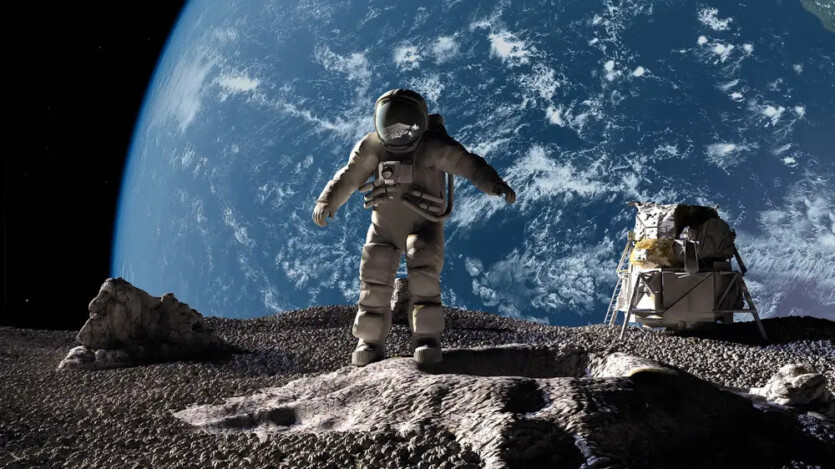
According to recent research, scientists have found that moon dust may not be as harmful to humans as it was thought.
The results of new experiments have shown that typical air pollution on a busy street is more dangerous than inhaling moon dust. According to professor of Natural Sciences at the University of Technology Sydney Brian Oliver, the results confirm the safety of returning humans to the Moon.
Concerns about the toxicity of lunar dust arose from the results of the «Apollo» missions. Lunar dust has a static charge, which is why it sticks to astronauts’ spacesuits. After the astronauts returned to the lunar module, dust from their spacesuits was released into the air. Inhaling it caused respiratory problems that lasted for one day and then disappeared.
According to an astronaut of the «Apollo 17» Harrison Schmitt, the effects of lunar dust inhalation resemble a fever accompanied by burning eyes, sneezing and sore throat. Back on Earth, one of the mission’s surgeons reported similar symptoms after unpacking the used spacesuits.

Doctors and astronauts also reported that symptoms worsened after each new mission, suggesting that repeated exposure to lunar dust is becoming even more toxic. Nevertheless, separate evidence does not quantify the potential harm that lunar dust can cause to humans.
In this regard PhD student in the Respiratory Research Group at the University of Technology Sydney Michaela Smith decided to find out how dangerous moon dust really is. She conducted experiments using two samples that mimic real lunar dust, found in dark volcanic lowland plains of our satellite and in the older highlands.
Particles smaller than 2.5 microns are small enough to be inhaled and trapped in the lower respiratory tract Smith introduced them into two different types of lung cells — bronchial and alveolar.
After that, the scientist conducted a similar experiment using samples of of particulate matter in the air, taken on a busy Sydney street. The researcher found that although the uneven shape and roughness of lunar dust cause lung irritation, which is much weaker than the effect of polluted terrestrial air.
«It is important to distinguish between a physical irritant and a highly toxic substance. Our results show that while lunar dust may cause some immediate respiratory irritation, it does not appear to pose a risk of chronic, long-term diseases such as silicosis, which is caused by materials such as silica dust», — says Michaela Smith.
These results may have an impact on NASA’s planned Artemis mission, which involves return of astronauts to the Moon. NASA still has concerns about the health risks to astronauts due to the toxicity of lunar dust. That is why one strategy involves attaching the astronauts’ spacesuits to the outside of the lunar module, so that astronauts can enter and exit the spacesuits through an airlock inside the module without bringing moon dust into the cabin.
Platinum in the Moon’s $1 trillion craters — scientists find probable deposits
The results of the study are published in the journal Life Sciences in Space Research
Source: Space.com

Spelling error report
The following text will be sent to our editors: